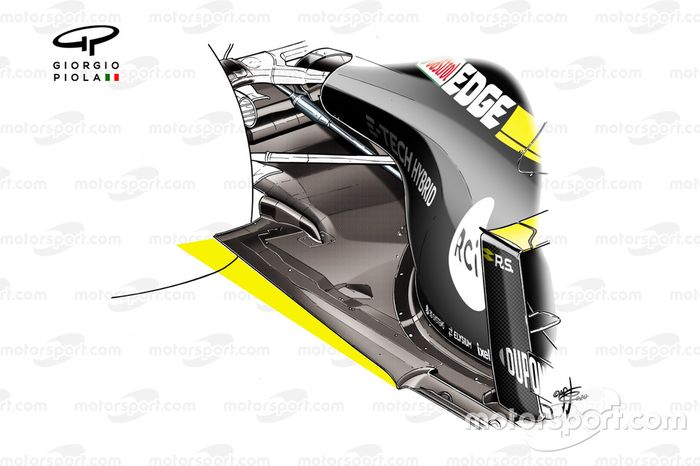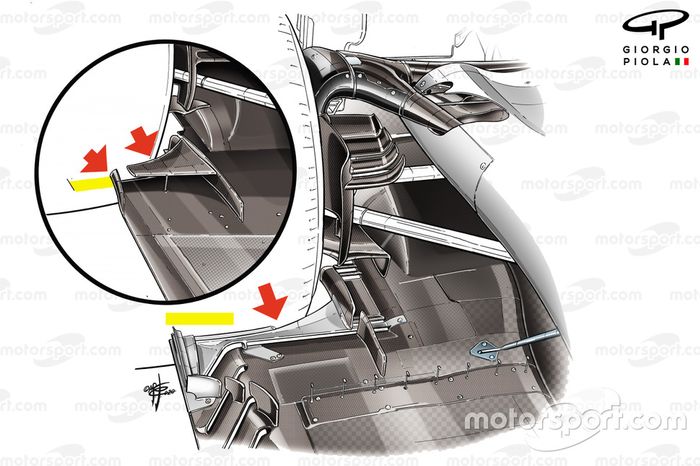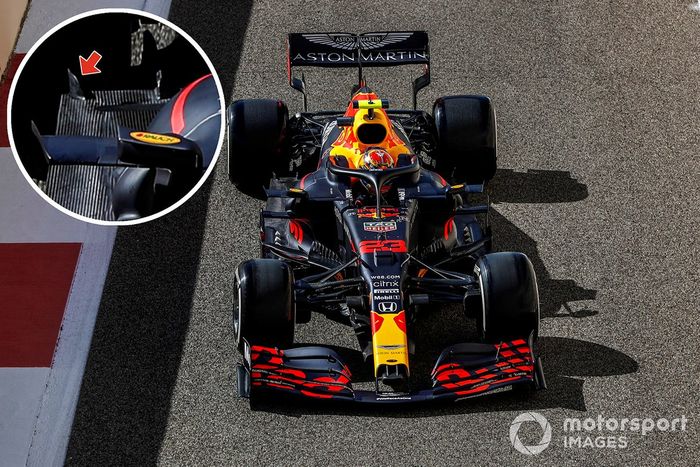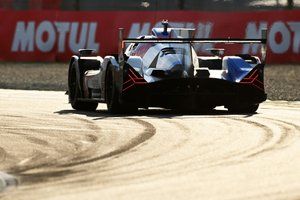Why F1's 2021 floor changes could alter the pecking order
While Formula 1's 2021 cars will feature a lot of carry over from last year, the changes that are being made have huge potential to mix things up.

Photo by: Giorgio Piola
Giorgio Piola's F1 technical analysis
Giorgio Piola is the preeminent Formula 1 technical journalist. View our full selection of Giorgio's technical illustrative content
Some of those new elements will be part of general season-on-season improvement, but it is the new floor rules that could yet play a decisive role in swinging the competitive order around.
And there is a potentially interesting scenario playing out where the tweaks to the floor - part of a raft of changes aimed at cutting downforce by 10 percent – could favour either the Mercedes or Red Bull concept.
For what initially appeared to be an innocuous change to the floor area ahead of the rear tyre, has actually manifested itself as something quite significant.
Andy Green, who is technical director of the renamed Aston Martin squad, said after evaluating the impact of the new floor last year: "It's a huge change, believe it not. A small change relatively speaking to the floor has had quite a significant impact on the performance of the car.
"It's not just a redevelopment of the floor, unfortunately, it's a redevelopment almost of the front to back aerodynamics of the car to try and recover it."
Given Red Bull's high rake arrangement, the initial thought was that it could come off worse because of the new floors. However, others argue that Mercedes could actually be the ones hurt the most from the arrangement.
Here we take a look at what's at stake and how it could impact both teams.
Going through changes
Firstly, it's key to understand what's changing. The interim regulations implemented by the FIA were a means of countering the downforce that's been added by teams since the regulations were changed in 2019.


The FIA's opening salvo was to create a diagonal cutout in the floor ahead of the rear tyre. But, the data accumulated during the first few races of the season proved that this alone would result in them falling some way short of their 10 percent downforce reduction target.
As such, the governing body swiftly followed this up by announcing further changes - a reduction in the width of the rear brake duct winglets and a height reduction for the diffuser strakes.
Not content with this, or perhaps having realised the designs that might emerge as a consequence of leaving things as they were, the FIA made another alteration at the 11th hour, preventing the use of fully enclosed holes in the floor.
Meanwhile, Pirelli made a U-turn too and pushed to bring new tyres. It plans to supply a revised tyre for 2021 that will not only handle the demands placed on the tyres more effectively, but also allow the Italian tyre manufacturer to prescribe lower minimum starting pressures for the coming season.

Mercedes AMG F1 W11 tyre check
Photo by: Giorgio Piola
This is crucial, as it means that the teams not only have new rules to focus on, they also have to deal with a revised tyre construction. This ramps up the aerodynamic challenge significantly, as they now have a relatively unknown variable in the middle of all the other technical changes.
This is a battle that aerodynamicists have been tackling for decades but one which has certainly seemed to take centre stage as the team's find gains with infinitesimal tweaks.
But, whilst it's easy to think about how the rear tyre behaves in the centre of this storm, there's also the front tyre to consider. A different deformation characteristic here means any flow structure created to deal with the turbulence it generates will also have to be tuned to recover that performance.
This means that teams will not only have to make alterations to the parts directly affected by the regulation changes, but pretty much every aerodynamic surface on the car as they relink the aerodynamic connections that have been severed by the regulation changes and new tyres.
The rake factor

Ferrari SF1000 rake
Photo by: Giorgio Piola
Circling back to the assumption that rake would be a factor in deciding who will be hit worse by the regulation changes, let's take a look at how that might have come about.
The term rake is used to describe the nose down attitude of the car and is perhaps most widely associated with Red Bull and its lineage of cars since 2009.
It's also a design trait that has been almost universally adopted by the entire grid too, as it's widely accepted that, if the conditions are right, a car designed with a higher rake angle will be able to generate more downforce from the floor and diffuser than one at a lower angle.
This is down to the additional volume that's created between the underside of the floor/diffuser and the ground.
However, if you cannot effectively seal the edge of this volume, you will lose any potential downforce that can be generated and start to have some unwanted side effects instead.
This is likely why there was a belief that Red Bull would suffer the most when it comes to the new regulations, as the diagonal floor cutout removes some of the aerodynamic tools it has been using over the last few years to create that 'seal'.

Red Bull RB7 blown diffuser
Photo by: Giorgio Piola
But all teams have regularly been using fully enclosed holes that stretch almost the entire length of the floor, rather than in the section just ahead of the rear tyre, to make gains in this area too.

Ferrari SF1000 floor
Photo by: Giorgio Piola
These longitudinal holes, which we must remember are now banned for 2021, are used as a way of sealing the edge of the entire floor, not just the rear section and diffuser. This means the floor becomes an extension of the diffuser and is where we begin to crossover into Mercedes territory.
As we've already established, Red Bull's high rake potentially increases the volume of its diffuser due to the increased ground clearance, whereas Mercedes' low-line rake philosophy, tied to its longer wheelbase, gives it more floor space to create that volume in the area ahead of the diffuser.
Interestingly, the novel low-line rake philosophy used by Mercedes is a continuation of the car's design DNA that was present even before its dominant reign began in the hybrid era. It hadn't followed the rest of the flock and taken on Red Bull's high rake approach, favouring its own blend of chassis and aerodynamic compliance instead.
However, with FRIC removed during 2014 and, with it, some of the control the team had over the aerodynamic platform, a longer wheelbase was used as a countermeasure.
This probably became more significant in 2017 due to the regulations changes that would affect the aerodynamic handshake the floor has with the diffuser and led to the W08 being known as a bit of a diva.
In the time that's passed since, Mercedes ironed out some of these issues but the introduction of these new regulations will test that resolve, as with relatively more floor stolen from it by the diagonal cutout, it will once again have to address the aerodynamic kinship of the proximal flow structures.
Could both lose out?
If you look at it objectively it seems that both short wheelbase/high rake and long wheelbase/low rake philosophies are going to take a hit then.
But, how much will depend on the reliance each has on the aerodynamic functionality of the outgoing fully enclosed holes on their floor and diffuser, when compared with the losses they'll initially accrue from the trimming down of the floor, brake ducts and diffuser.
The thing to remember though, is whilst 10% was the FIA's target, it's not a figure that will be representative for every team.
The same can be said if you take each change in isolation, with the brake duct winglets being trimmed back likely to hurt one team more than another too.
Right now there is not a clear answer as to who comes off worse, but there seems no doubt it is going to have an impact. Maybe there is a scenario where both come off badly, and they fall back into the chasing pack...
Be part of Motorsport community
Join the conversationShare Or Save This Story
Related video
Subscribe and access Motorsport.com with your ad-blocker.
From Formula 1 to MotoGP we report straight from the paddock because we love our sport, just like you. In order to keep delivering our expert journalism, our website uses advertising. Still, we want to give you the opportunity to enjoy an ad-free and tracker-free website and to continue using your adblocker.






















Top Comments